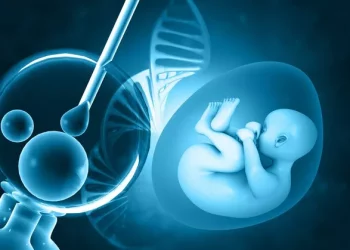Teratozoospermia is a condition characterized by abnormal sperm morphology, which refers to the size and shape of sperm cells. In medical terms, it is defined as having a high percentage of sperm with abnormal morphology, typically categorized as having less than 4% normal forms according to strict criteria. This condition can significantly impact male fertility and the chances of successful conception.
Causes of Teratozoospermia
Teratozoospermia can stem from various factors, including genetic predispositions, lifestyle choices, health conditions, and environmental influences. Genetic factors such as chromosomal abnormalities or mutations can affect sperm development, leading to abnormal morphology. Lifestyle choices such as smoking, excessive alcohol consumption, and drug use have been linked to teratozoospermia due to their adverse effects on sperm production and quality.
Health conditions like diabetes, hormonal imbalances, infections of the reproductive system, and varicocele (enlarged veins within the scrotum) can also contribute to teratozoospermia by disrupting the normal processes of spermatogenesis. Additionally, exposure to environmental factors such as toxins, pesticides, and radiation may impair sperm production and morphology.
Diagnosis of Teratozoospermia
Diagnosing teratozoospermia typically involves a comprehensive semen analysis, where a sample of semen is collected and examined under a microscope. The analysis assesses various parameters, including sperm count, motility, and morphology. The World Health Organization (WHO) has established standards for sperm morphology evaluation, with strict criteria defining normal morphology as having at least 4% of sperm with normal forms. Kruger’s strict criteria are another commonly used method for assessing sperm morphology.
Types of Teratozoospermia
Teratozoospermia can be further classified into different types or grades based on the severity of abnormal morphology. These classifications may vary depending on the criteria used for assessment. Some common types include mild, moderate, and severe teratozoospermia, with each category indicating the percentage of sperm with abnormal morphology and its impact on fertility.
Treatment Options for Teratozoospermia
Treatment options for teratozoospermia aim to improve sperm morphology and enhance fertility potential. Natural treatments may include lifestyle modifications such as quitting smoking, reducing alcohol intake, maintaining a healthy diet, and managing underlying health conditions like diabetes or hormonal imbalances.
Assisted reproductive technologies (ART) offer additional options for couples struggling with teratozoospermia. Techniques such as intrauterine insemination (IUI) or in vitro fertilization (IVF) with intracytoplasmic sperm injection (ICSI) can bypass the natural barriers posed by abnormal sperm morphology, increasing the chances of successful conception.
Impact on Fertility
Teratozoospermia can significantly impact male fertility by reducing the chances of sperm reaching and fertilizing the egg. Abnormal sperm morphology may impair sperm motility and the ability to penetrate the egg’s outer layer, hindering the fertilization process. As a result, couples affected by teratozoospermia may face challenges in achieving pregnancy naturally and may require assistance from fertility specialists.
FAQs about Teratozoospermia
Q1: Can teratozoospermia be treated?
A2: While there is no cure for teratozoospermia, certain treatments and lifestyle changes can improve sperm morphology and increase the likelihood of conception.
Q3: Is teratozoospermia a common condition?
A3: Teratozoospermia prevalence varies among populations, but it is considered a relatively common cause of male infertility.
A4Can teratozoospermia be inherited? The Genetic factors can contribute to teratozoospermia, but it is not always directly inherited.
Does teratozoospermia affect sperm motility? Yes, teratozoospermia can impact sperm motility, reducing the sperm‘s ability to reach and fertilize the egg.
Latest Research and Expert Opinions
Recent studies have explored potential treatments and interventions for teratozoospermia, including the use of antioxidants, hormonal therapies, and advanced reproductive techniques. Medical professionals specializing in male infertility emphasize the importance of early diagnosis and personalized treatment approaches to address the underlying causes of teratozoospermia and optimize fertility outcomes.
In conclusion, teratozoospermia is a complex condition influenced by various genetic, lifestyle, and environmental factors. Understanding its causes, diagnosis, and treatment options is crucial for couples facing fertility challenges. By seeking medical guidance and exploring available interventions, individuals affected by teratozoospermia can increase their chances of achieving a successful pregnancy and fulfilling their desire for parenthood.

























